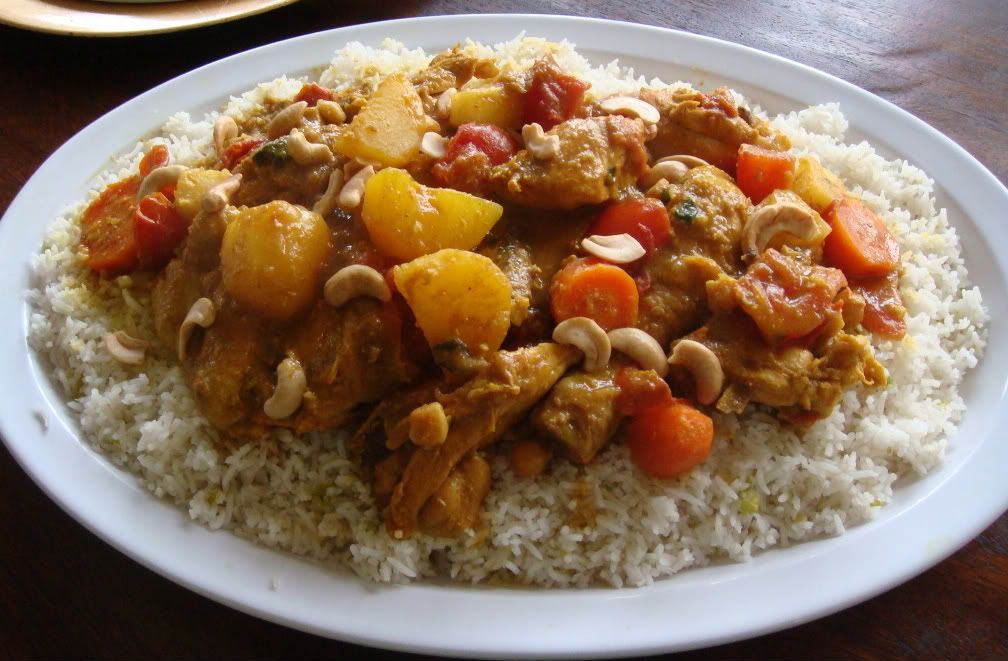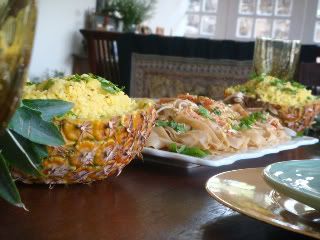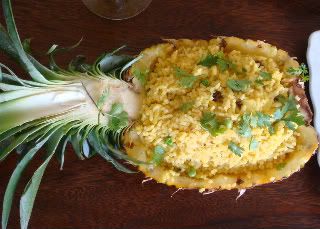I have been scouring the internet looking to learn more about homeschooling and came across this blog by a Filipino Homeschool mother - "The Homeschool Nanay", one of her posts was very educational for me and I would like to thank her for it. I would like to reprint it here as I thought it was very informative and could help us newbies choose the direction we feel is best suited for our individual needs.
Although this was written with a non-secular frame of mind, it would still be very helpful for those parents considering secular type homeschooling. (You may click on the blog name to go to The Homeschool Nanay's Blog or click on "What to Expect.." to be taken directly to her article). The article below is credited to the Homeschool Nanay, I reproduced a copy because I felt the article relevant to my search for the right homeschool style to adapt. Thank you Homeschool Nanay for your great article!
[Erratum: The Homeschool Nanay has very kindly informed me that the article should be credited to the homeschooling members of the MILK Ministry of Christ's Commission Fellowship (CCF) in Alabang, this was the third of a series of three entries on Homeschooling 101, which was actually an orientation/forum for those interested in homeschooling organized by this ministry of CCF. In the Homeschool Nanay's own words "these hardworking & generous ladies came up with a hand-out for this event, which is where those three entries came from". Thank you to the MILK Ministry of CCF for this article and to the Homeschool Nanay for making this invaluable article available to the rest of us!]
WHAT TO EXPECT WHEN YOU DECIDE TO HOMESCHOOL
A. Opposition
Because not very many know what homeschool is all about, you will find that there will be friends and relatives who will question your decision to do it. Do not be discouraged since this is a very normal reaction. If you persevere, you will find out later that they will be convinced about the benefits once they see the results on your children.
Because you are teaching your children the way of the Lord, you will find that Satan will be working to discourage you. It is therefore absolutely necessary to start each day with the Lord. Heart preparation is absolutely essential to getting through the day.
B. Adjustment
If your children are now in a traditional school, there will be a period of adjustment which may prove to be difficult. During my first week of homeschool, my children complained a lot. They said that all I did was talk and talk and talk- I cried a lot. Talk to other homeschoolers to get encouragement and to get tips. I found out soon enough that you need to be flexible and creative when it comes to teaching. It is also necessary for you to determine what kind of learner your child is so you can adjust your methods.
Preparation is important so that your children's interest is always aroused. You will find, therefore, that you will be spending a lot of time in the initial months on getting prepared and organized. It will sometimes be tiring.
You will have less time to yourself because the demands are daily, prepare yourself with the proper attitude so that you avoid disappointment. Focus on why you are doing it and draw your strength from the power of the Holy Spirit.
C. Choice of a Curriculum
Because there are so many available (see Homeschool.com for an idea), you will end up being confused, It would be good to choose a curriculum that someone is familiar with so that it will be easy for you to get support. Also, you will have the opportunity to buy the second-hand materials of your friends.
Because there is really so much material, you may also end up ordering so much and find out that you will not have the time to use all of it. I am sure those who have done it will agree with me that you will have the tendency to overbuy in the initial stage. It would therefore be good if you decide on a curriculum and then order the core requirements. Order the supplements once you see that your child is ready to take on additional work.
Most of the homeschoolers in CCF have either used Alpha Omega (see www.aop.com), Bob Jones (see www.bjup.com), or Sonlight (www.sonlight. coin). The website www.homeschool.com is very useful.
In order to help you get started, you may want to read the following homeschool books. They are all on the list of the top ten homeschooling books of homeschool.com.
1. So You're Thinking About Homeschooling: Fifteen Families Show How You Can Do It by Lisa Whelchel
2. The Ultimate Book of Homeschooling Ideas: 500+ Fun and Creative Learning Activities for Kids Ages 3-12 by Linda Dobson
3. Homeschool.com' s Homeschooling for Success by Rebecca Kochenderfer and Elizabeth Kanna
4. The Teenage Liberation Handbook: How to Quit School and Get a Real Life and Education by Grace Llewellyn
5. Dumbing Us Down: The Hidden Curriculum of Compulsory Schooling by John Taylor Gatto
6. CarSchooling by Diane Flynn Keith
7. The Unschooling Handbook: How to Use the Whole World as Your Child's Classroom by Mary Griffith
8. The Homeschooling Book of Answers: The 88 Most Important Questions Answered by Homeschooling's Most Respected Voices Edited by Linda Dobson
9. Deschoolinq our Lives Edited by Matt Hern
10. The Successful Homeschool Family Handbook: A Creative and Stress-Free Approach to Homeschooling by Raymond & Dorothy Moore
You will also find that there are many approaches or methods to educating your children at home, The more you read, the more confused you will be. I would suggest that you start with the school-at-home approach. As you gain more experience in your child's capability and his learning style, you can start using different approaches depending on the subject and the topic you are teaching, Just remember that the objective is learning. If a method causes the student to learn better, then certainly adopt it.
These are the various homeschooling approaches. Each approach has its merits. Identifying your child's learning style, especially for new homeschoolers, is helpful. Is he or she an auditory learner, a visual learner, or a kinesthetic learner? Effective home teachers use lessons that vary the learning modalities.
School-at-Home
School-at-home is the style most often portrayed in the media because it is so easy to understand and can be accompanied by a photo of children studying around the kitchen table. This is also the most expensive method and the style with the highest burnout rate. Most families who follow the school-at-home approach purchase a boxed curriculum that comes with textbooks, study schedules, grades, and record keeping.
Some families use the school-at-home approach but make up their own lesson plans and find their own learning materials. The advantage of this style is that families know exactly what to teach and when to teach it. That can be a comfort when you are just starting out. The disadvantage is that this method requires much more work on the part of the teacher/parent and the lessons are not as much fun for the children.
Unit Studies
Unit studies use your child's interest and then ties that interest into subject areas like math, reading, spelling, science, art, and history. For example, if you have a child who is interested in ancient Egypt, you would learn the history of Egypt, read books about Egypt, write stories about Egypt, do art projects about pyramids, and leam about Egyptian artifacts or mapping skills to map out a catacomb.
Packaged unit studies are available on popular topics like the Little House and American Girl books and also for virtues like patience, trust, and obedience. The advantage of this homeschooling method is that it recognizes the fact that people learn best when they are interested in the topic. The disadvantage is that sometimes parents can be over-zealous and make a unit study out of everything, scaring the child off from talking about a new interest they might have.
"Relaxed" or "Eclectic" Homeschooling
"Relaxed" or ''Eclectic" homeschooling is the method used most often by homeschoolers. Basically, eclectic homeschoolers use a little of this and a little of that, using workbooks for math, reading, and spelling, and taking an unschooling approach for the other subjects.
The advantage of this method is that the parent feels that the subjects they believe are most important are covered thoroughly. This method also allows the family to choose textbooks, field trips, and classes that fit their needs and interests.
Unschooling
Unschooling is also known as natural, interest-led, and child-led learning. Unschoolers learn from everyday life experiences and do not use school schedules or formal lessons. Instead, unschooled children follow their interests and learn in much the same way as adults do-by pursuing an interest or curiosity. In the same way that children leam to walk and talk, unschooled children learn their math, science, reading, and history. John Holt, schoolteacher and founder of the unschooling movement, told educators in his book, What Do I Do Monday?: "We can see that there is no difference between living and learning, that living is learning, that it is impossible, and misleading, and harmful to think of them as being separate. We say to children, 'you come to school to learn.' We say to each other [educators], 'our job is to teach children to learn.' But the children have been learning, all the time, for all of their lives before they met us. What is more, they are very likely to be much better at leaming than most of us who plan to teach them something."
The advantage to unschooling is that unschooled children have the time and research abilities to become experts in their areas of interest. The disadvantage is that because unschoolers do not follow the typical school schedule, they may not do as well on grade-level assessments and may have a harder time if they reenter the school system. Unschooling books are available from the John Holt Association Bookstore (now operated by FUN-Books.com) at 1-888-FUN-7020.
Classical Homeschooling
The "classical" method began in the Middle Ages and was the approach used by some of the greatest minds in history. The goal of the classical approach is to teach people how to learn for themselves. The five tools of learning, known as the Trivium, are reason, record, research, relate, and rhetoric. Younger children begin with the preparing stage, where they learn basic reading, writing, and arithmetic. The grammar stage is next, which emphasizes compositions and collections, and then the dialectic stage, where serious reading, study, and research take place.
All the tools come together in the rhetoric stage, where communication is the primary focus. Popular books on the classical approach include The Well-Trained Mind: A guide to Classical Education at Home by Jessie Wise and Susan Wise Bauer and Recovering the Lost tools of Learning by Douglas Wilson. Also available is the book Teaching the Trivium by Harvie and Laurie Bluedorn from Trivium Pursuit (1-309-537-3641).
Multiple Intelligences
"Multiple intelligences" is an idea developed by Howard Gardner and Harvard University's "project zero." The belief is that everyone is intelligent in his or her own way and that learning is easiest and most effective when it uses a person's strengths instead of their weakness. For example, most schools use a linguistic and logical-mathematical approach when teaching, but not everyone learns that way. Some students, the bodily kinesthetic learners for example, learn best by touching and not by listening or reading. Most successful homeschoolers naturally emphasize their children's strengths and automatically tailor their teaching to match their child's learning style. Successful homeschoolers also adjust their learning environment and schedule so that it brings out their child's' best.
Some children prefer structure and learn best when they are told what to do, others learn best on their own. Some children do their best work around the kitchen table, and others excel when they are out of doors. The goal for the homeschooling parents is to identify how, when, and what their child learns best and to adapt their teaching style to their child.
DVD/Video Schooling
This approach can be used with all different styles of homeschooling. Use quality educational titles to help your child learn Science, Physics, American History, World History, Religion, Preschool skills, Music, Art and more. This is not watching television. A powerful movie can inspire a new interest or help your child develop a solid understanding of a complicated area of learning.
Recommended Resources: Educational DVDs from quality producers like National Geographic, PBS, A&E, and The Discovery Channel are available from Homeschool.com's DVD rentals.
Internet Homeschooling
Harness the power of the Internet by accessing virtual tutors, virtual schools, online curriculum, and quality websites. You need never feel that you can't find the help, expert advice or resources necessary to homeschool your child. Did you hate math as a child and feel you can't possibly help your child learn math? Or what about (YIKES) Algebra? How about Physics? No problem.
There is a wealth of cutting-edge online curriculum programs, private distance learning schools, homeschool support academies and more.
D. Physical Arrangements
Normally, setting up the place where children will be homeschooled is done as a last thought. However, establishing an environment for learning early in the homeschooling process supports your educational efforts in several key ways.
• It shows the child that the parent teacher is serious about home instruction, and that he or she will be required to meet expectations.
• The dedication of a space to the classroom reinforces the importance placed on the child's education.
• It helps to keep materials organized and available, which in turn makes it easier to select appropriate items for each day, as well as the materials to take on field trips and other excursions.
Creating a good educational environment is especially important for new homeschoolers, and for students who need additional help in focusing on the lessons at hand. The following helpful suggestions for building the right homeschool classroom were complied from conversations with the experts -- experienced homeschooling families.
Setting up your classroom:
If possible, assign a specific area in your home to be your classroom. This can be a spare room, the dining room, the kitchen table, or a den area. Ideally, this space should be employed solely for homeschooling purposes so the students associate it as an area for academic instruction. If that is not possible--as is frequently the case--then make sure when instruction begins, the area is clear of other, non-educational items, which could prove distracting. The classroom should offer storage space, such as a bookcase, and good lighting,
A comfortable chair and desk--or other workspace--is important. If homeschooling several children, study carrels are helpful. They provide private work areas for each child and limit distractions.
Having an easel, flip chart, or whiteboard available can enhance instruction. You will also want to have wall space available for displaying your student's work maps, and posters. Access to a globe, a dictionary, other reference materials, and a computer are helpful additions to the academic setting.
Establishing the rules:
In some homes, classroom rules come about naturally. In other homes, parents find they must establish rules. These rules of order might include what to wear for class or how to ask questions. If you establish rules, stick to them! For instance, if you are teaching more than one child and one of them is calling out answers all the time, you might consider having him raise his hand. You might even consider posting a list of your classroom rules.
Staying organized:
Develop a system for compiling, evaluating, and filing the student's work. Many experienced home teachers use folders or notebooks. If you have several children, try using a colour-coding system. Your students will quickly learn to look for their personal folder or notebook when an assignment is completed. Use your lesson manual to track your progress and to make notes concerning a need for review or other questions. In areas where local school officials want to see proof of your student's work these notes and files are invaluable.
Keeping to task:
Let family and friends know when school is in session. Keep interruptions to a minimum, and use the answering machine to handle unnecessary telephone calls. If possible, schedule appointments around the school day and resist the temptation to forego lessons for chores and errands. Remember that the decision to homeschool will provide you with more quality family time during, and after, the daily lessons!
Everyone can benefit from the creation of the proper "home school" environment. Most children thrive when placed in a proper environment for learning and when the guidelines for their behavior and expectations are clear. Parents benefit by not having to constantly establish order or create a space for schooling. Try including your children in setting up the classroom so that you both feel comfortable in the space.
Successful homeschooling occurs when you select appropriate lessons for your child and create a good environment for learning, and it is maintained by a parent committed to inspiring the best in a child.
E. Recognition of Work
Parents may eventually choose to enroll their children in a formal school after years of homeschooling. Many choose to bring their children back to a traditional school for secondary schooling. To be able to enroll your students in a traditional school, many will require your report cards and documentation from DepEd that your children have met the necessary requirements for promotion to the level you are intending to place them in. At the moment, the guidelines to be able to get the proper documentation are unclear. However, the steps are not impossible.
Generally, schools will require that you present results of a validation test or the PEPT test. For your children to take a validation test, it will be necessary for you to present proof of work. either in a report card and/or test and work sheets. Children are normally required to take a test for each level that they were away from formal schooling. The permit to take a validation test is issued by the DepEd NCR in Quezon City. The actual test is administered in DepEd, Pasig. Other parents have taken the option to take the Philippine Educational Placement Test (PEPT). The PEPT is normally given to children who have been out of school for a considerable amount of time and do not have any record of any kind of study. DepEd itself is unclear as to which is applicable since the recommendations on which exams to take differ depending on the student and the person at DepEd. One thing is sure, however. Each homeschool student will need to take a test if he or she has been independently homeschooling.
In order to avoid the problems at DepEd, it is possible to enroll under the accredited homeschool programs of DepEd. There are a number of schools who have an approved homeschool program but the popular ones are The Master's Academy (TMA) and the Living Heritage Academy (LHA). Both institutions will give full credit for the studies accomplished at home and will issue report cards that are accepted in all local schools.
The other option, though more expensive, is to enroll your children with U.S. homeschooling institutions who will also issue the necessary report cards. You will then be considered to have studied in an American school. Bob Jones University is an example of such. There is plenty of information on the Internet regarding this option.
The choice of whether to enroll in an accredited program or to do an independent program is a decision that depends on the availability of time, the flexibility and the learning styles of your children. It should be a personal decision that should meet the personal circumstances of each family. I have known families who have been successful under both conditions.
Read more...























